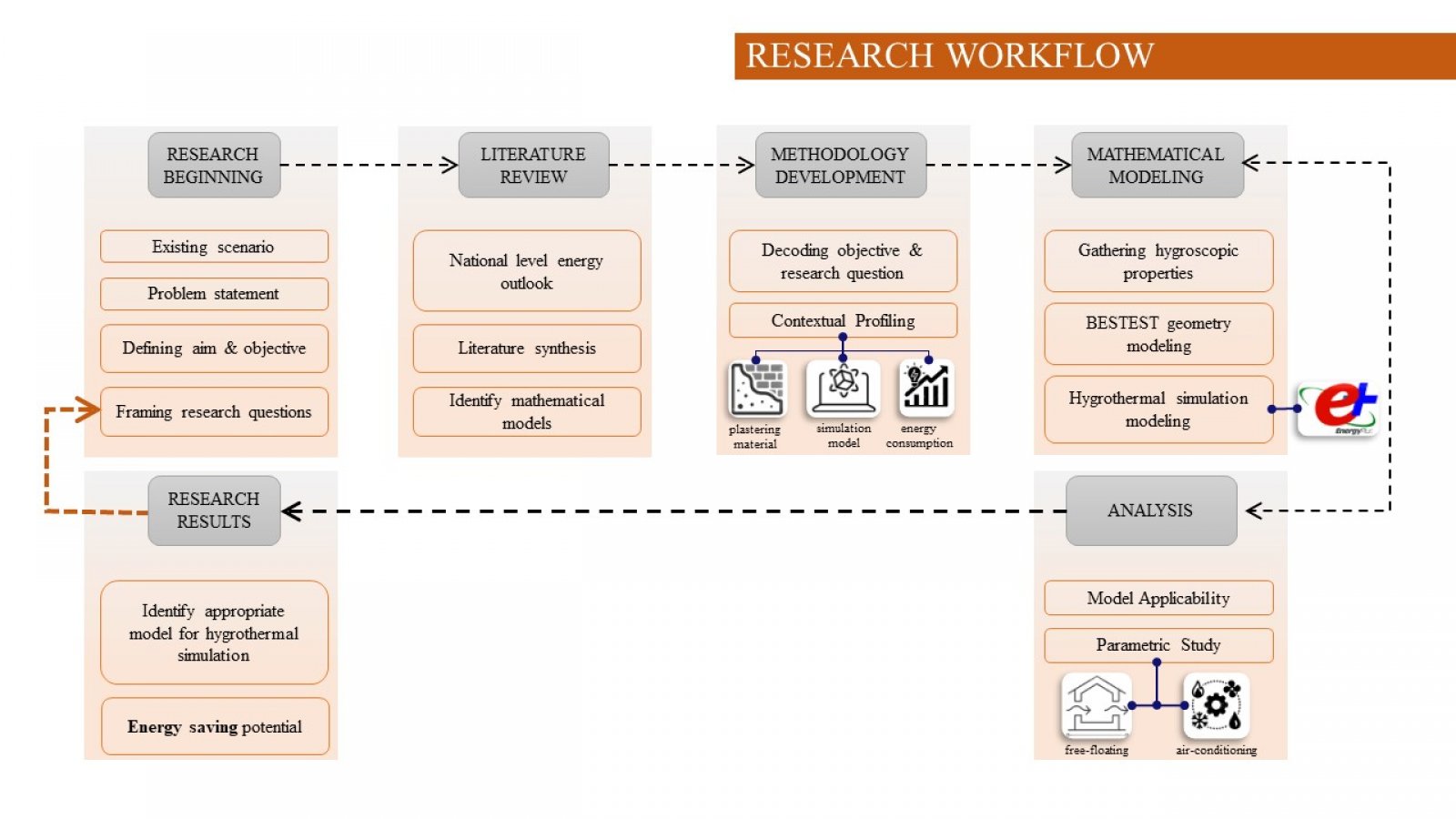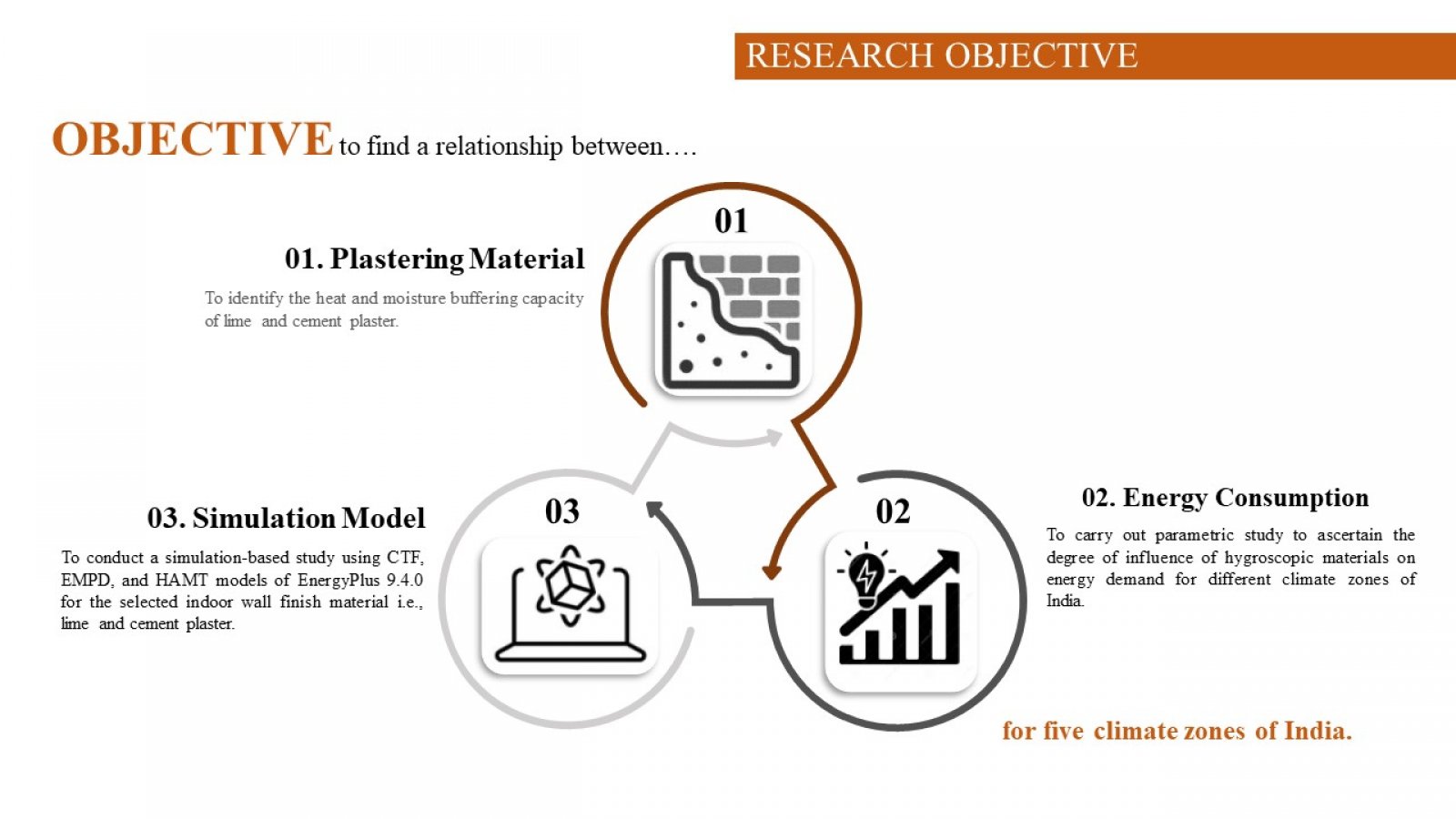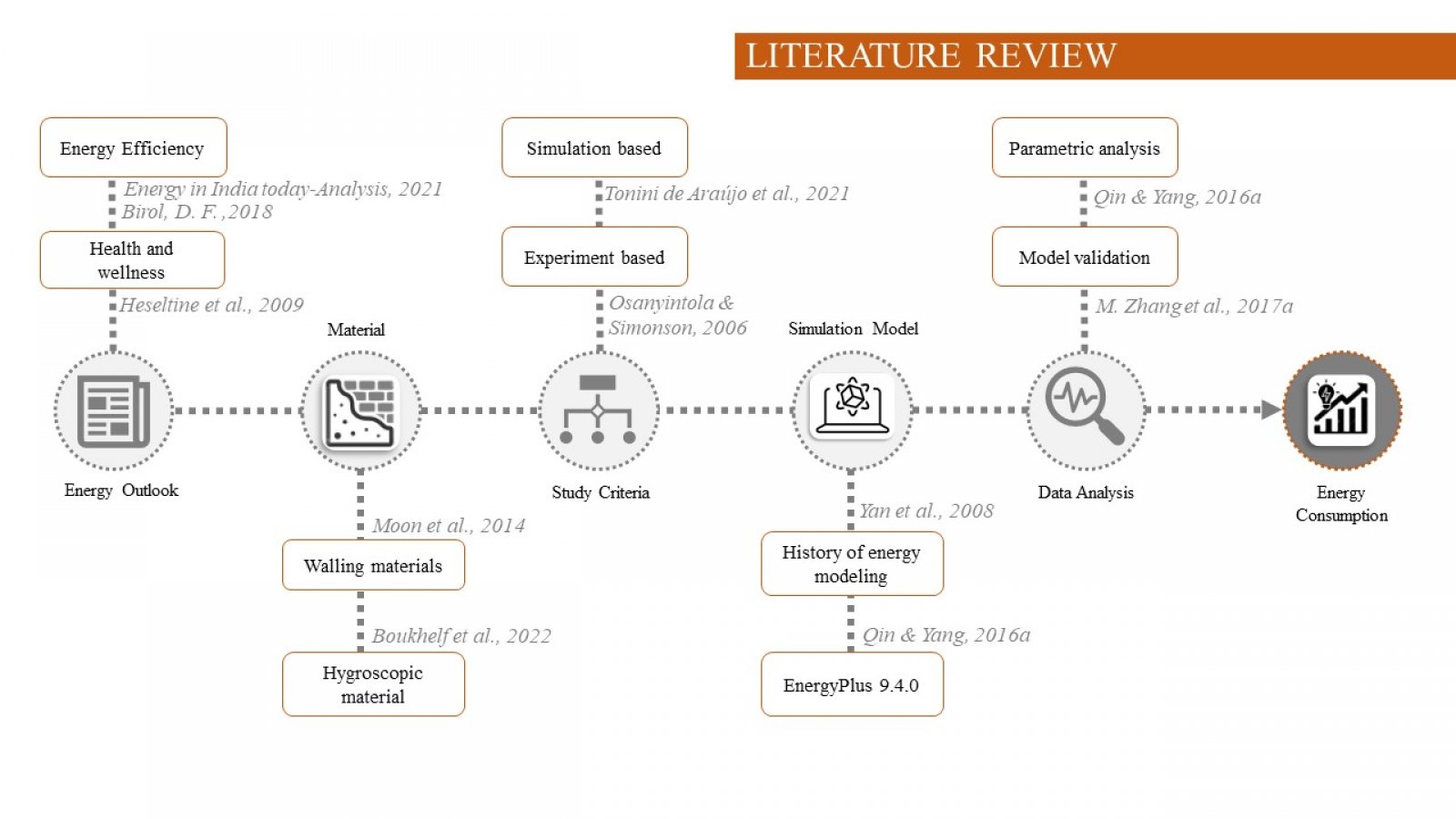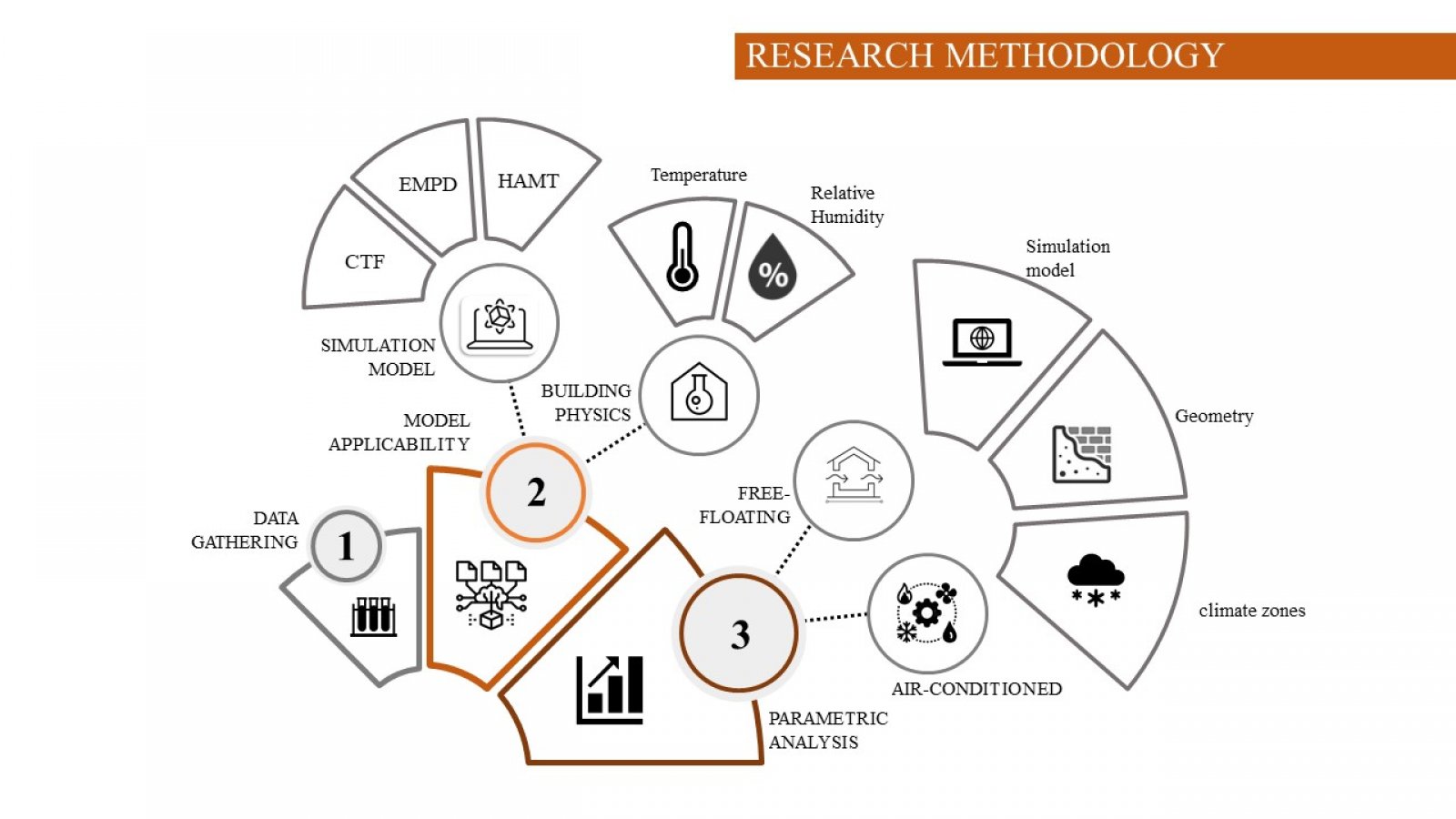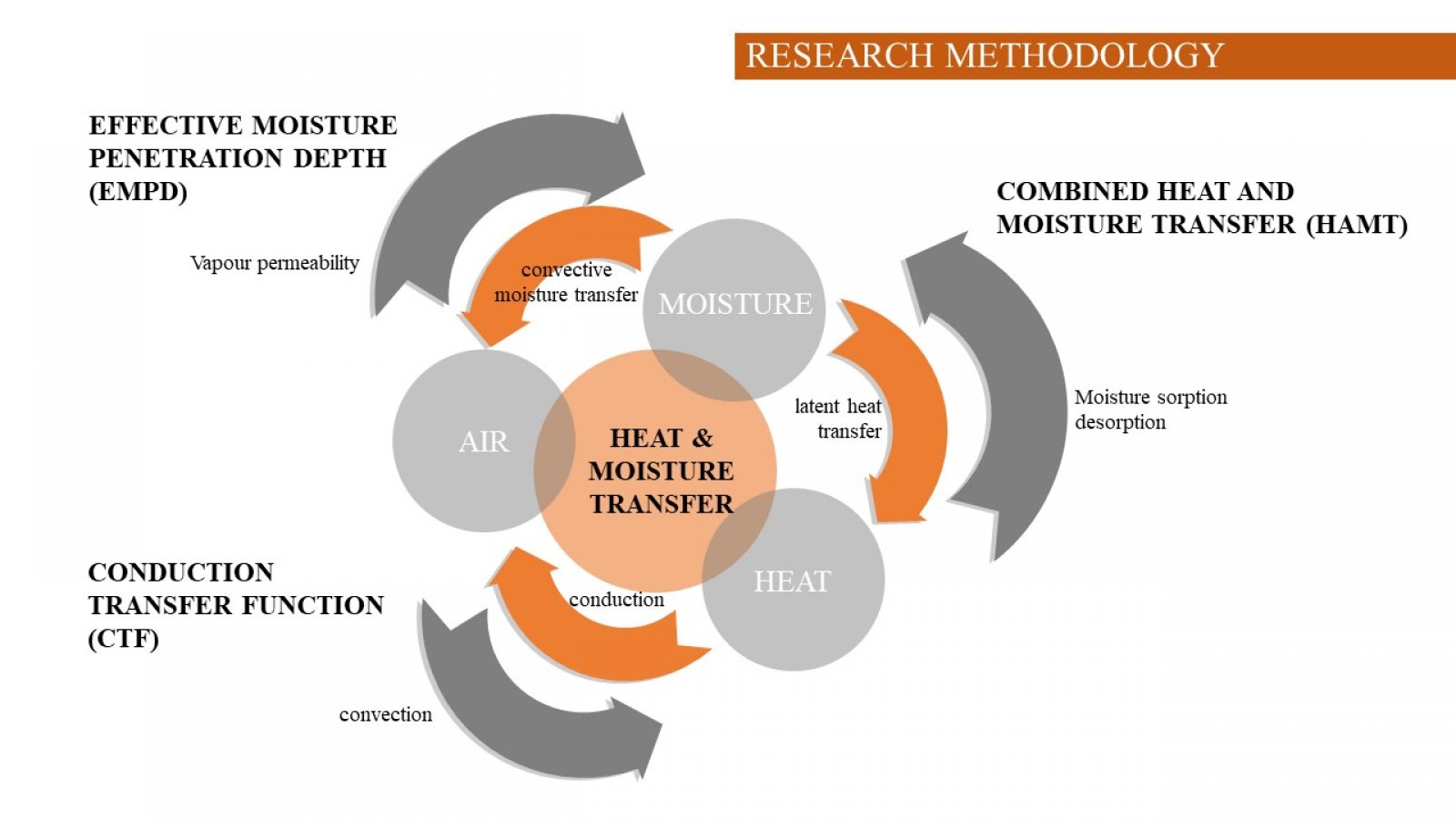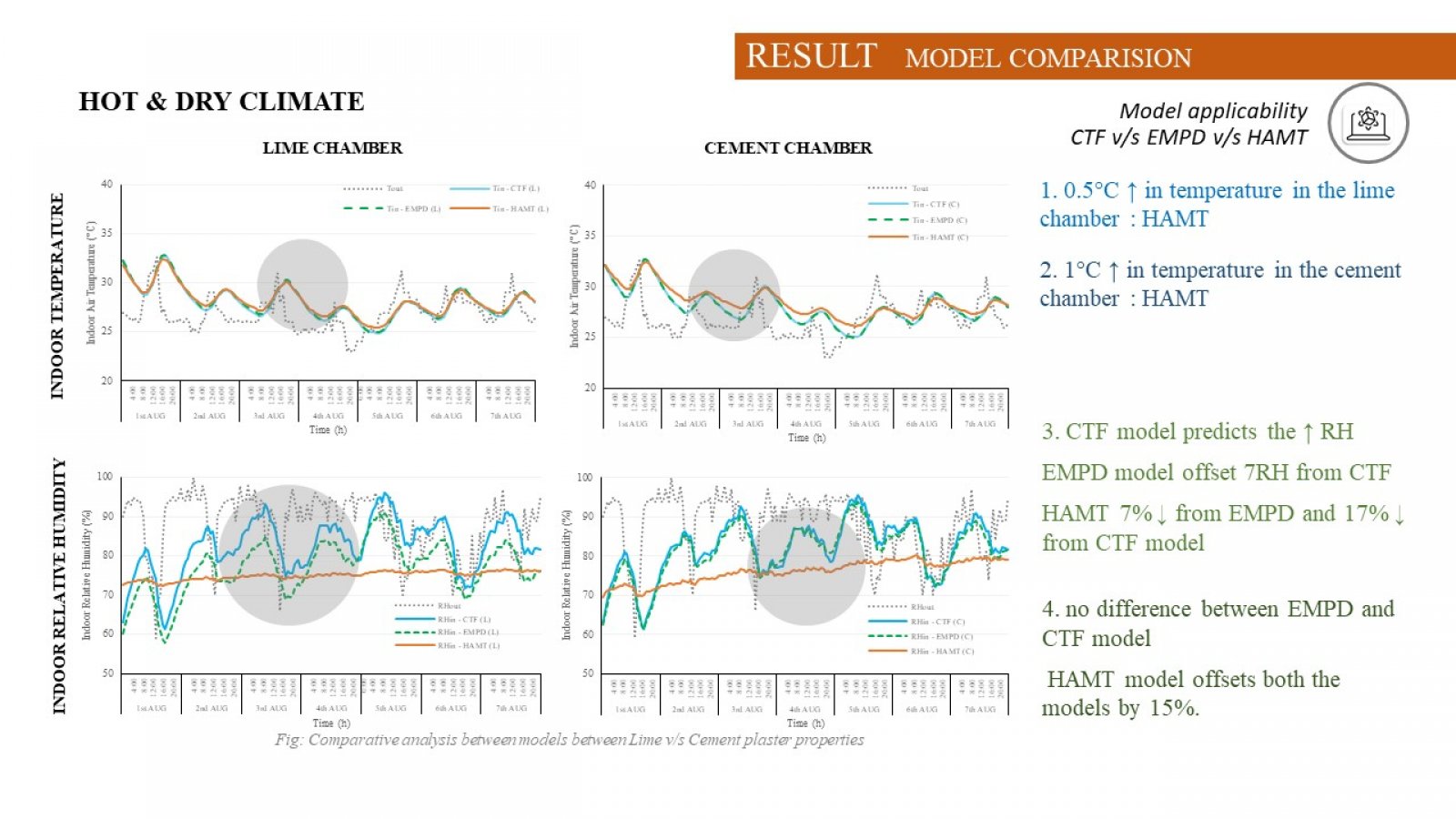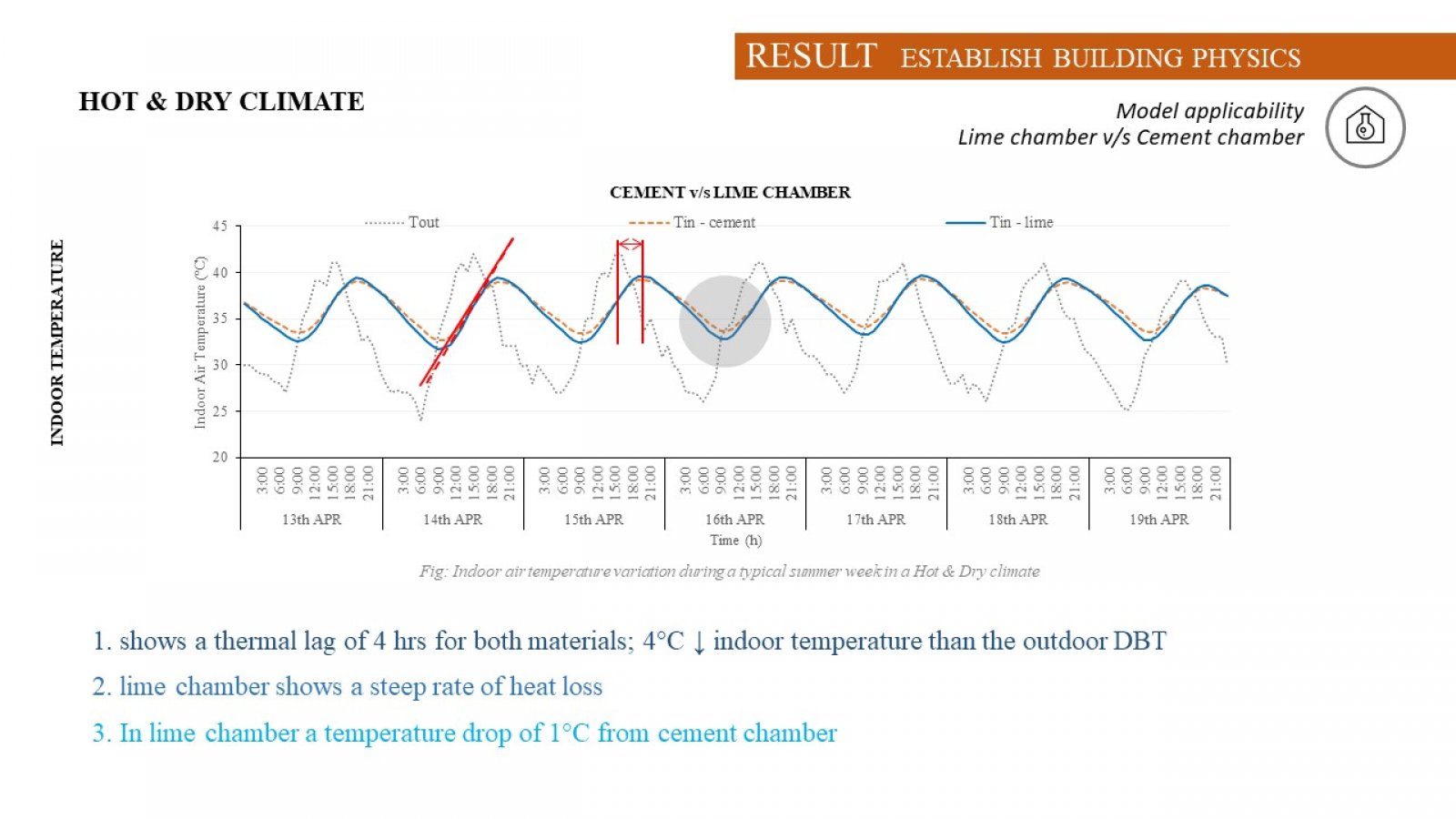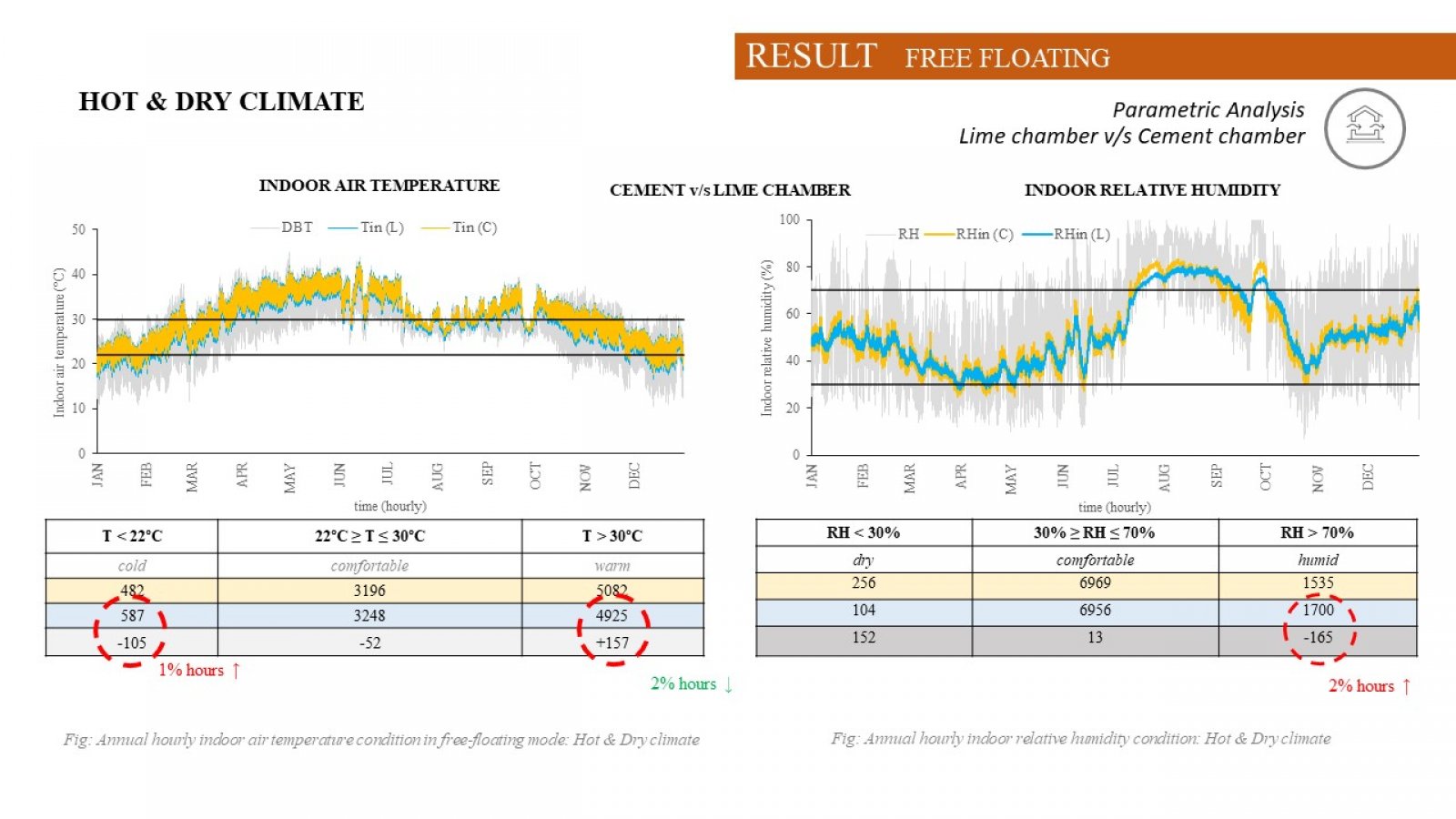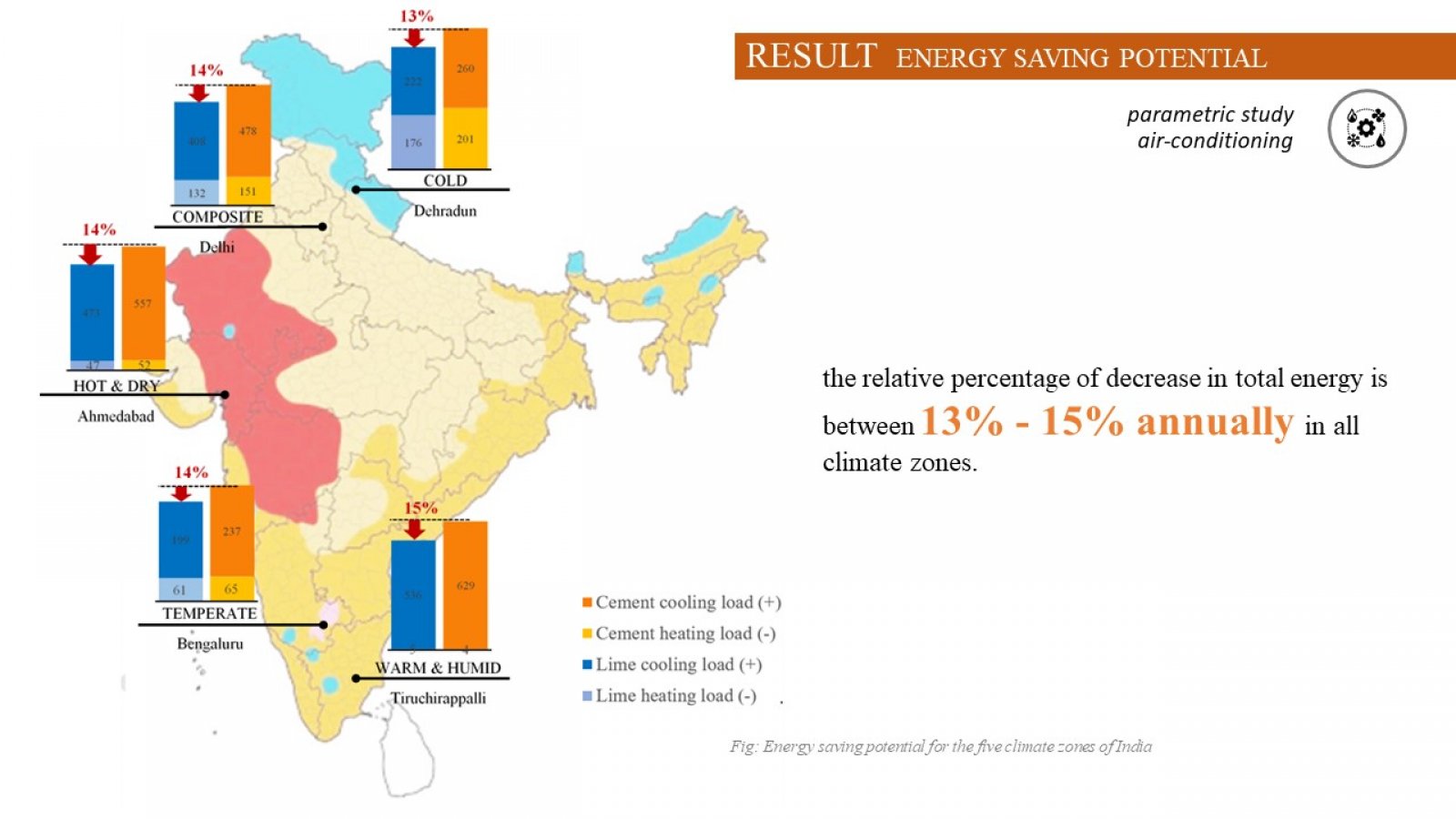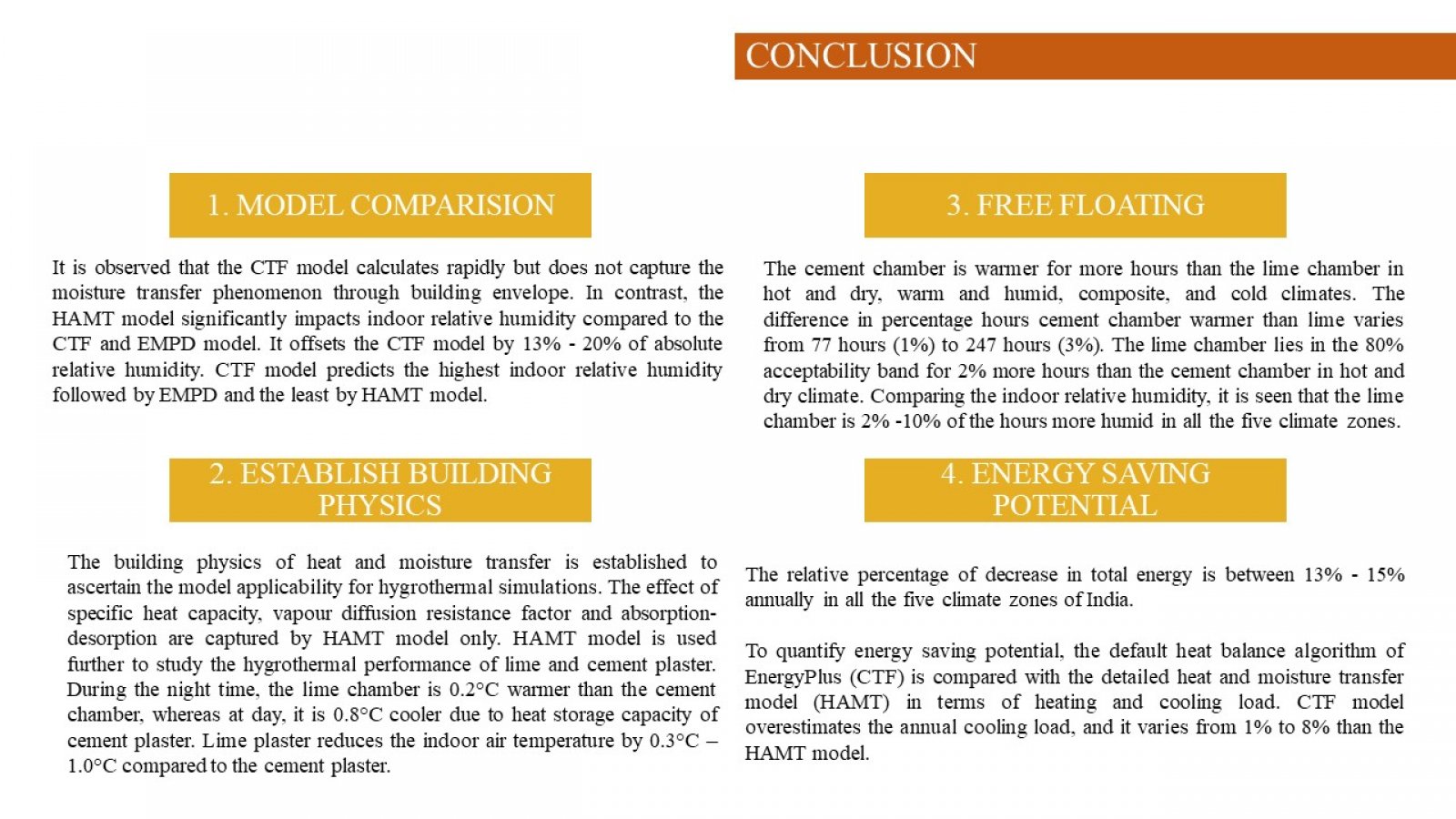Your browser is out-of-date!
For a richer surfing experience on our website, please update your browser. Update my browser now!
For a richer surfing experience on our website, please update your browser. Update my browser now!
Moisture buffering of building materials can moderate indoor humidity. Thus, building energy simulations need to model this buffering to predict the impact accurately. In most building energy analysis software, calculating heat conduction through walls usually neglects the transport and storage of moisture in materials. This paper studies three numerical models, Conduction Transfer Function (CTF), Effective Moisture Penetration Depth Model (EMPD), and Combined Heat and Moisture Transfer (HAMT). While many researchers have used the HAMT model to predict indoor humidity, there is no study on the Indian walling material context. Lime and cement plaster are the majorly used internal wall finish in India. Lime is a sustainable material, and buildings with lime plaster are breathable due to their moisture buffering properties. But unfortunately, lime plaster lost its identity as cement plaster became widely accepted. This study aims to estimate the impact of lime and cement plaster on building energy consumption for different climate zones of India.
